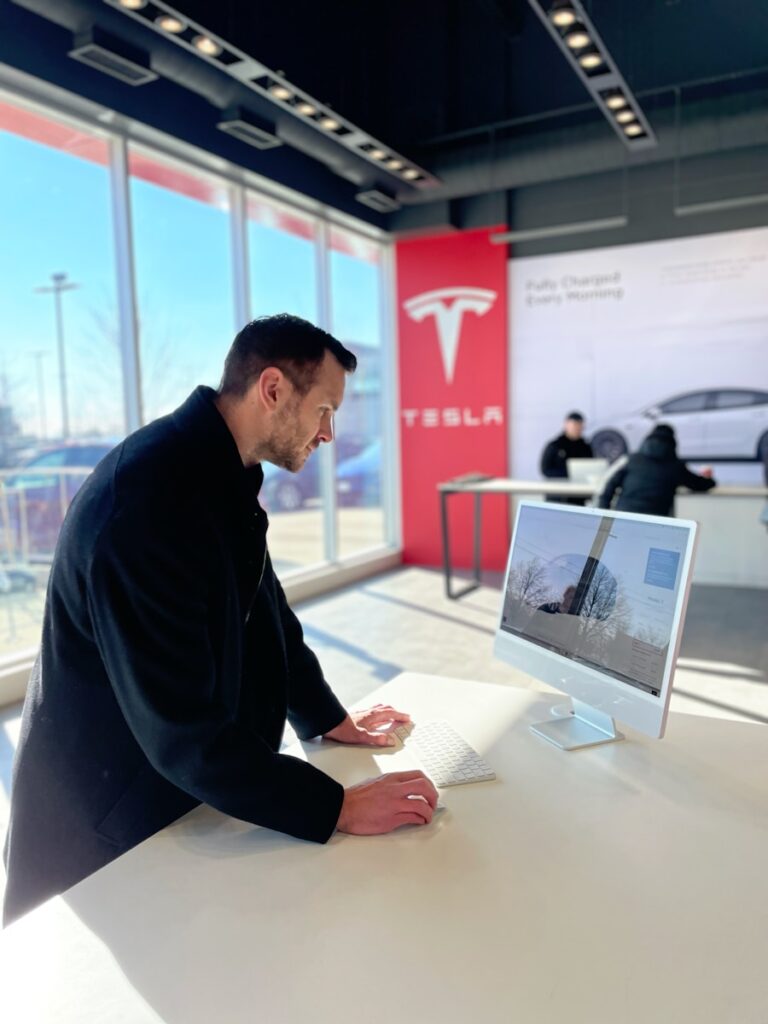
The process of purchasing a vehicle stands apart from most other buying decisions consumers face. Unlike a standard retail transaction, car prices can fluctuate significantly, even between dealerships situated close to each other, and a buyer’s negotiation skills can genuinely mean the difference between paying the Manufacturer’s Suggested Retail Price (MSRP) or saving thousands of dollars.
One of the most powerful tools a consumer possesses in securing the best price is strategic timing. If your schedule allows for flexibility, aligning your vehicle purchase with specific periods can not only lead to the best deal on the vehicle itself but also ensure you acquire the best vehicle overall for your needs. This foresight grants you the confidence in your chosen car and the terms you ultimately agree to, providing a valuable period of contemplation before committing to a significant investment that, in recent years, has seen prices balloon across the market.
Understanding when dealers are most motivated to sell, and why they offer savings during certain times, is key to empowering yourself as a car buyer. This comprehensive guide will explore various opportune moments throughout the year, backed by industry insights, to help you make informed purchasing decisions and maximize your savings, ensuring you don’t leave money on the table.

1. **Buying Before You Absolutely Need One**Starting your search for a new vehicle well in advance of when you actually require one is perhaps the most fundamental and empowering strategy for any car buyer. This proactive approach grants you the indispensable luxury of time—time to conduct thorough research, identify the vehicle that perfectly aligns with your needs and budget, and ultimately, significantly increase your likelihood of being fully satisfied with your purchase.
Planning ahead also fundamentally shifts the power dynamic in your favor when you step onto the dealership lot. When circumstances force a quick replacement vehicle purchase, a skilled salesperson can, and often will, leverage your urgency to their advantage. A tight deadline means you may not find your ideal car on the dealer’s lot, compelling you to settle for whatever is available, potentially at a price point that far exceeds your ideal budget.
Furthermore, if you intend to trade in your current vehicle, remember that a car in good running order commands a significantly better resale value than one requiring expensive repairs to become salable. Without planning, you might be forced to spend money fixing your current ride to make it an acceptable trade-in, rather than allocating those crucial dollars towards a down payment on your new car. A savvy move is to introduce your potential trade-in only after you’ve firmly negotiated a hard number for your prospective purchase or lease deal. This prevents dealers from obscuring the true value they’re offering for your trade-in by manipulating discount and trade-in figures.
Embarking on the car-buying process at your leisure enables you to confidently decide on the specific vehicle you desire, the fair price you should pay, and the optimal financing method. You can approach the dealership with a relaxed demeanor, secure in the knowledge that you have ample time to consider all your options. This flexibility even permits test-driving multiple cars ahead of time, allowing you to act decisively and confidently as soon as an attractive deal emerges.
Read more about: Mastering the Car Trade-In: An Expert’s Guide to Negotiating a Better Price for Savvy Buyers

2. **The End of the Month**Car dealerships, much like most retailers, operate under strict monthly sales goals, a practice they are particularly renowned for. If you can identify a dealer that appears to be lagging behind its sales targets as the month draws to a close, their salespeople will exhibit a much stronger inclination to offer you a compelling deal. While they may not explicitly state the reason for the discount, it’s typically driven by their need to achieve just a few more sales to surpass their quotas and unlock substantial financial benefits.
The stakes are considerably high for dealerships when it comes to meeting these monthly goals. Beyond the monetary incentives they receive from automakers, achieving sales targets can also result in allocations of more vehicles or access to additional popular models, giving them a competitive edge in the market. This collective push to hit targets translates directly into greater potential savings for the astute consumer.
Naturally, if a dealer or salesperson has already met or exceeded their monthly sales targets, their motivation to offer a deeply attractive deal diminishes significantly. However, shopping at the very end of the month remains a gamble well worth considering, especially if you proactively gather quotes from several dealerships within your area. This allows you to compare offers and identify those truly eager to close a deal.
The end of the month is a time when you shouldn’t “sleep on the car deal,” as salespeople might be willing to sell a car at a loss just to meet their individual or team quotas. This heightened motivation, driven by financial goals and sales targets, solidifies the end of the month as a consistently opportune period for making a purchase. If you’re feeling apprehensive about the swift pace of end-of-month negotiations, consider test-driving your desired car earlier in the month and then returning to finalize the deal as the deadline approaches. Many new-car incentive offers even extend for a few days into the next month, providing a slight buffer.
Read more about: Are You Making These 13 Dog Park Mistakes? Vets and Handlers Speak Out.

3. **Mondays (and Other Quieter Weekdays)**While some conventional wisdom might suggest shopping for a new or used car on the busiest days of the week, typically weekends, the underlying logic—that busy salespeople will rush to a quick deal for volume—doesn’t hold true anymore, if it ever genuinely did. Salespeople are adept at managing their time and will always carve out the necessary period for negotiation, even if it means scheduling a return appointment. They know that each sale represents significant potential earnings, regardless of showroom traffic.
Therefore, if salespeople are prepared to take their time, you should too. Opting to shop on Mondays, or any of the quieter early days in the week, offers several distinct advantages. You’ll benefit from more dedicated time to have all your questions thoroughly answered, enjoy unhurried test drives, and engage in calm, focused negotiations to secure a price that comfortably fits your budget. The dealership’s financing office is also far less likely to have a waiting line, potentially speeding up the entire transaction process.
An additional benefit of purchasing on a Monday is the accessibility of many local lenders, such as credit unions, which typically operate only on weekdays. This timing provides you with a greater opportunity to shop around for the most favorable rates and ensure you’re securing the best possible financing deal. While having pre-approved financing in place before visiting any dealership is always the optimal approach, shopping on a Monday can reinforce this strategy.
However, it’s worth noting that shopping at the beginning of the week might not be as effective immediately following major sales events or in regions where Sunday sales are prohibited. In these specific scenarios, dealership staff often spend their Mondays catching up on paperwork and administrative tasks from the busy weekend, potentially leaving them with less time to engage with customers as thoroughly as usual. In such cases, a Tuesday or Wednesday might be the quieter, more advantageous option.
4. **Three-Day Holiday Weekends**Three-day holiday weekends are universally recognized as busy periods at car dealerships, and for good reason. Automakers frequently roll out special financing and lease deals specifically to coincide with these holidays, creating a compelling draw for prospective buyers. The holiday weekends most commonly associated with these heavily promoted deals include Memorial Day, Labor Day, Fourth of July, and Presidents’ Day.
Among these, Memorial Day stands out as one of the most advantageous times to buy a vehicle. It effectively marks the official kick-off of the summer car sales season, and as such, typically features a multitude of attractive deals originating from both dealers and the automakers themselves. This initial surge of incentives sets a competitive tone for the upcoming months, offering early-bird buyers significant opportunities.
The Labor Day weekend also presents a strong opportunity for securing a favorable deal, primarily because it aligns with the commencement of the fall sell-off season. During this crucial period, automakers begin to introduce the next year’s models, and dealerships become increasingly motivated to clear out their inventory of the previous year’s models to make room for new arrivals. This creates a powerful incentive for discounts and special offers.
These holiday sales events are strategic moves by automakers to ‘move the metal’ throughout the year, usually backed by significant rebates and special financing options. Besides the broader Christmas season, the weekends surrounding Memorial Day, July 4th, and Labor Day are consistently promoted across various media. Dealers facing an oversupply of particular models are especially likely to sweeten these holiday deals with additional discounts, making them prime times for a vigilant buyer to capitalize.
Read more about: Debunking the Car-Buying Myths: Your Guide to the 10 Best Times to Score a Deal

5. **The Fall Season (October & Early November)**For the majority of consumers, the annual calendar runs from January through December. However, within the automotive industry, the ‘new year’ truly commences in October, a pivotal month when many all-new and redesigned models begin to arrive in dealer showrooms. This annual cycle creates a pressing need for dealers to clear out the ‘old’ models from their lots, driving a significant shift in pricing strategies. This changeover to the new model year invariably leads to an increase in both incentives and discounts.
If the outgoing year’s model possesses the features you desire, and the newly arriving model doesn’t introduce any indispensable advancements, then October and early November present an excellent window to capitalize on these circumstances. You can often secure substantial savings on a vehicle that is, in essence, functionally identical to its successor, often only differing in minor aesthetic updates or trivial additions. Dealerships will be notably anxious to sell these vehicles to create space for the incoming stock.
November, while continuing the previous model-year sell-offs that persist throughout the fall, also notably includes Black Friday. This major shopping holiday, positioned at the tail end of the fall sell-off season, is also sufficiently close to the calendar year-end to align with dealers’ and sales associates’ critical year-end sales goals. Consumers who choose to bypass the chaos of traditional retail stores and instead direct their attention to car dealerships during this period can unlock significant savings. The deals during November tend to progressively escalate throughout the month, with automakers frequently offering exceptional low-cost financing incentives and very generous cash-back car deals, making it a powerful month for car acquisition.

6. **The End of Each Quarter (March, June, September)**Beyond the monthly sales objectives, dealerships also operate under quarterly sales targets, which typically culminate in March, June, September, and December. These quarterly deadlines often intensify the pressure on dealerships to hit specific sales volumes, triggering even more aggressive discounting tactics than those seen at the close of a regular month. Shopping during the final two weeks of these particular months can yield tangible savings, often ranging from 3-5% off the Manufacturer’s Suggested Retail Price (MSRP), as dealers strive to meet their larger, quarterly goals.
Automakers frequently provide additional financial incentives to dealerships and their sales teams for reaching these quarterly milestones. These bonuses can be substantial, making a dealership highly motivated to push through any remaining sales, even if it means accepting a lower profit margin on individual vehicles. The prospect of these collective rewards creates a powerful impetus for deals, offering a golden opportunity for informed buyers.
While December is a unique case that combines end-of-quarter and end-of-year pressures, the preceding quarterly conclusions in March, June, and September should not be overlooked. Each represents a significant inflection point in the sales cycle where dealerships are eager to clear inventory and demonstrate strong performance to their corporate partners. This strategic timing allows buyers to leverage internal dealership motivations to their financial benefit, providing a consistent pattern of opportunity throughout the year, even outside the widely recognized year-end clearances.
Therefore, if your car-buying timeline is flexible, aligning your purchase with the end of these quarters can be a highly effective strategy. These periods are characterized by heightened competition among dealerships and a concentrated effort to move vehicles, translating directly into more favorable pricing and potentially better financing options for the discerning consumer. Diligent research into manufacturer incentives around these times can further amplify your savings potential.

7. **Year-End Sales Events (December & New Year’s)**December consistently distinguishes itself as the paramount month for car acquisitions, culminating in the most attractive deals available throughout the year. During this intense period, dealerships and their sales teams are intensely focused on achieving critical monthly, quarterly, and annual sales objectives. This collective drive to hit demanding targets fuels a robust competitive environment, which translates directly into significant opportunities for shrewd buyers. Moreover, automakers actively support this favorable climate by rolling out highly compelling financing options and generous cash-back incentives tailored specifically for the festive season, further sweetening the pot for prospective customers.
A primary, often unspoken, catalyst for these substantial year-end discounts is strategic inventory management and accounting. Dealerships are under considerable pressure to liquidate existing stock before the calendar year concludes, aiming to minimize the volume of vehicles carried over into the new fiscal period. This imperative to reduce inventory can lead to remarkably aggressive pricing strategies; dealers might be willing to accept reduced profit margins, or even incur a small loss on individual sales, if it means achieving their overarching volume targets and unlocking substantial bonus allocations or financial incentives from manufacturers. Consequently, the final week of December, particularly December 30th and 31st, is consistently identified as the optimal window for securing these deeply discounted transactions.
The advantageous timing for buyers seamlessly extends beyond the official close of the calendar year, encompassing both New Year’s Eve and New Year’s Day. These dates, despite their chronological placement, are frequently retroactively factored into the preceding year’s sales figures by both automakers and dealerships. This crucial accounting practice ensures that the intense pressure to meet sales quotas often persists into the initial days of January, allowing astute buyers to capitalize on lingering incentives and the sustained motivation of sales staff. Additionally, many prominent holiday incentives are designed to carry over for a few days into the new month, providing a convenient buffer for any last-minute negotiations or paperwork finalization.
While the sheer abundance of deals is appealing, the end-of-year rush invariably means dealerships operate at peak busyness. This high-traffic environment necessitates that prospective buyers undertake meticulous preparation well in advance of their visit. Essential steps include precisely identifying the desired vehicle model, trim level, and preferred features; securing pre-approved financing from an independent lending institution, such as a credit union; and having a realistic, data-backed appraisal of any potential trade-in vehicle. Such comprehensive preparation empowers the buyer to navigate the bustling showroom efficiently, engage in calm, focused negotiations, and avoid being swayed by time constraints or a salesperson’s amplified sense of urgency. Industry analyses, such as those by Edmunds, suggest that buyers can anticipate savings of up to 6-8% off the Manufacturer’s Suggested Retail Price (MSRP) during this prime period.
8. **Black Friday Specials**Black Friday, long recognized as the quintessential shopping spectacle for consumer goods, has increasingly solidified its position as a noteworthy event within the automotive sales calendar. Strategically situated towards the culmination of the fall sell-off season, it presents a distinct and powerful opportunity for car buyers intent on securing substantial savings. Dealerships actively participate in this widespread shopping fervor, often by unveiling enticing “doorbuster” deals and specialized incentives meticulously crafted to capture the attention of value-seeking consumers. This creates a high-energy environment conducive to aggressive pricing.
This specific period is especially advantageous because it perfectly aligns with the ongoing and intensified effort to clear out current model year vehicles to make essential room for the impending arrival of new stock. Throughout November, and particularly in the days surrounding Black Friday itself, the deals and discounts tend to progressively amplify. Automakers frequently introduce exceptional low-cost financing incentives, including attractive 0% APR offers, and highly generous cash-back programs, solidifying November as a powerfully opportune month for vehicle acquisition. Industry sources indicate that average savings of 5-6% off MSRP are commonly observed during these Black Friday promotions.
To truly maximize the potential of Black Friday car-buying opportunities, a comprehensive and proactive planning approach is absolutely imperative. Prior to the holiday weekend, it is essential for buyers to meticulously research target vehicle prices, diligently obtain an accurate valuation for any potential trade-in vehicle, and, crucially, secure pre-approved financing from their bank or credit union. Conducting test drives of desired models ahead of time is also highly advisable. This thorough preparation ensures that buyers are well-equipped to act decisively, critically evaluate the often-aggressive Black Friday promotions, and carefully scrutinize the fine print of any deals that might seem “too good to be true,” safeguarding against impulsive or ill-informed decisions.
Read more about: Beyond the Blackout: 12 Famous Actors Who Navigated Failed TV Pilots on Their Path to Stardom

9. **Leveraging Manufacturer Incentives, Rebates, and Financing Deals**Beyond the predictable cyclical timing opportunities, astute car buyers maintain a continuous vigil for and strategically leverage specific manufacturer incentives, rebates, and special financing offers. These powerful programs are frequently deployed by automakers as a tactical measure to stimulate sales for particular models that may require an additional boost to meet sales targets, or to effectively maintain a competitive edge within the marketplace. Such incentives typically materialize as direct cash-back offers that reduce the purchase price, exceptionally low-rate or even 0% APR financing options that significantly cut borrowing costs, or highly attractive lease deals featuring reduced monthly payments and lower upfront sums due at signing.
The availability, generosity, and specific terms of these incentives can fluctuate considerably based on geographic region, prevailing vehicle demand, and the automaker’s evolving strategic objectives. Consequently, it is paramount for consumers to actively and consistently seek out and meticulously compare these dynamic offers across different models and brands. Reputable online resources, including dedicated new car deals and lease deals pages, provide invaluable, up-to-date information on the best available incentives, empowering buyers to pinpoint models offering exceptional value at virtually any given time throughout the year. This diligent, proactive research ensures that no potential savings are overlooked, irrespective of the specific calendar date.
It is important to highlight a key distinction when considering pre-owned vehicles. While direct cash-back offers are generally uncommon for used cars, manufacturers frequently extend highly competitive special financing deals specifically for certified pre-owned (CPO) vehicles. These robust CPO programs typically include stringent multi-point inspections and often come with extended warranties, providing an enhanced level of quality assurance and peace of mind alongside attractive financing rates. Understanding these nuanced differences in incentive structures across both the new and used car markets allows for a more comprehensive and effective approach to maximizing savings through manufacturer-backed programs, ensuring a well-informed purchasing decision.
Read more about: Navigating the Tire Market: 15 Essential Tips to Secure the Best Price and Maximize Value for Your Next Set of Tires

10. **Capitalizing on Model Changeovers and Discontinued Vehicles**The automotive industry operates on distinct and predictable design and life cycles for its vast array of vehicles. A particularly opportune moment for economically savvy buyers materializes towards the culmination of a vehicle’s design cycle, which typically spans approximately five years between comprehensive redesigns. During this critical period, as the impending arrival of an eagerly anticipated, newly redesigned model begins to generate buzz, dealerships find themselves under immense pressure and motivation to clear their existing inventory of the outgoing version. This inherent market dynamic presents a significant and consistent opportunity for buyers who prioritize tangible value and savings over the immediate acquisition of the absolute latest styling or cutting-edge technology.
It is a common and highly beneficial practice for automakers to initiate aggressive promotional campaigns, which include substantial discounts, generous cash-back offers, and attractive financing incentives, specifically for the outgoing model even before its redesigned successor officially makes its debut in showrooms. These previous year models often retain nearly identical functional capabilities, core safety features, and fundamental performance characteristics. The differences are typically confined to minor aesthetic updates, the introduction of new exterior color palettes, or incremental technological additions that may not be indispensable for all buyers. Consequently, a discerning buyer can secure remarkably substantial savings on a vehicle that, in essence, performs comparably to the newer, full-price model. Dealerships are notably anxious to liquidate these vehicles to free up invaluable lot space for the incoming, highly anticipated new stock.
An even more pronounced and potentially larger opportunity for significant savings emerges at the definitive end of a car model’s life cycle, which occurs when an automaker officially announces its intention to discontinue production of that specific vehicle altogether. In such scenarios, the incentives offered can be truly massive, as both manufacturers and dealers are driven by an urgent need to liquidate remaining stock swiftly and efficiently. While the acquisition of a discontinued car typically implies a faster rate of depreciation compared to a current model, this factor tends to be less impactful for buyers who have a clear intention to retain their vehicle for an extended period, rather than trading it in quickly. For these pragmatic purchasers, the potential for thousands of dollars in immediate savings often significantly outweighs the longer-term depreciation concern, making it a compelling proposition.
Nevertheless, prudent buyers must always conduct thorough due diligence and investigate the fundamental reasons behind a vehicle’s discontinuation. Some models are simply rebranded or smoothly replaced by new names as part of a strategic redesign. Others might be systematically phased out due to broad, evolving consumer preferences, such as the widely observed industry-wide shift from traditional sedans towards more popular SUVs and trucks. Conversely, a vehicle might unfortunately be withdrawn from the market due to inherent uncompetitiveness, consistent poor performance metrics, or persistent reliability issues, in which case significant caution is strongly advised. Comprehensive research into the specific model’s historical performance, reliability ratings, and the precise rationale for its discontinuation is absolutely essential to ensure a truly smart and informed acquisition that aligns with long-term ownership satisfaction.
Read more about: Mastering the Car Purchase: Unveiling the 12 Worst Days and 3 Best Times to Negotiate for Your Next Ride

11. **Strategic Used Car Buying and Times to Avoid**While a significant portion of the strategic timing principles beneficial for new car purchases can also be effectively applied to the used car market, there are distinct considerations and specific periods that savvy buyers should approach with heightened caution. For example, immediately following major holiday weekend sales events for new cars, which typically generate a high volume of trade-ins, it is often prudent to defer a used vehicle search for a few days. This strategic delay allows for the freshly acquired trade-ins to be meticulously processed, thoroughly inspected, and properly prepared for display on used car lots, thereby providing a considerably broader and potentially higher-quality selection for discerning buyers.
A fundamental understanding of prevailing market dynamics is absolutely crucial to effectively avoid unfavorable buying conditions, regardless of whether you are purchasing a new or used vehicle. Consumers should generally exercise restraint and avoid acquiring a car when a particular model is experiencing peak demand as a “hot seller” – perhaps due to being brand-new, recently redesigned, or consistently ranked as the best-selling model in its competitive class. In such high-demand situations, supply frequently lags behind buyer interest, often leading to inflated prices, with some models even commanding sums above their Manufacturer’s Suggested Retail Price (MSRP). Exercising patience until market prices stabilize or the initial wave of hype gradually subsides can result in substantial savings and prevent the unfortunate scenario of overpaying for a trendy vehicle.
Beyond specific model popularity, several general periods throughout the year are inherently less conducive to securing the most advantageous deal. These include the very beginning of a new model year (often identified as September for new cars, when initial demand is high and incentives are scarce), weekends when dealership showrooms are typically most crowded and sales personnel may have less dedicated time for individual customers, and the early days of any given month before the mounting pressure of sales quotas begins to influence pricing strategies. Additionally, the period coinciding with tax return season (typically February through April) can see an artificial surge in demand as consumers utilize refunds for down payments, potentially diminishing a buyer’s overall negotiation leverage during these months.
Finally, it is imperative for buyers to be acutely aware of common misconceptions and specific, high-risk pitfalls in the car-buying journey. The persistent “urban legend” suggesting that securing a significantly lowball price is possible by showing up just before a dealership closes or on Christmas Eve is largely unfounded; seasoned salespeople are adept at managing negotiations and will invariably prioritize a sound deal over a hasty exit. More critically, under no circumstances should one ever purchase a used car shortly after a major natural disaster, such as a severe flood, has impacted your geographic area. Unscrupulous sellers may attempt to quickly repair and offload water-damaged vehicles before such crucial information can be accurately reflected on vehicle history reports. Always, without exception, invest the time and money in securing a comprehensive pre-purchase inspection conducted by an independent, trusted mechanic to meticulously mitigate these significant risks and uncover any hidden damage or latent mechanical issues.
Read more about: Mastering the Car Trade-In: An Expert’s Guide to Negotiating a Better Price for Savvy Buyers
Navigating the inherent complexities of car acquisition—a significant financial commitment—requires a sophisticated combination of strategic timing and diligent, well-informed preparation. While the annual calendar consistently presents numerous opportune moments to secure remarkably favorable pricing—ranging from the high-stakes year-end sprints and compelling holiday specials to the advantageous model changeovers and specific manufacturer incentives—it is crucial to recognize that these inherent advantages are truly unlocked only through empowered, decisive action. Synthesizing these timing strategies with meticulous, data-driven research into desired vehicles, a clear understanding of prevailing market values, and the foresight to secure pre-approved financing forms the indispensable bedrock of any truly successful vehicle purchase. As numerous consumer advocacy organizations and industry experts consistently attest, unwavering persistence in negotiation and a steadfast refusal to be rushed into a decision are among your most potent allies. Ultimately, the best deal isn’t merely stumbled upon; it is meticulously earned by rigorously empowering yourself with comprehensive knowledge, unwavering resolve, and strategic patience, thereby ensuring you drive away not just with a car, but with a genuinely smart, satisfying, and enduring investment.






